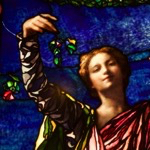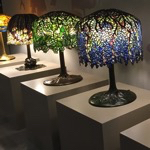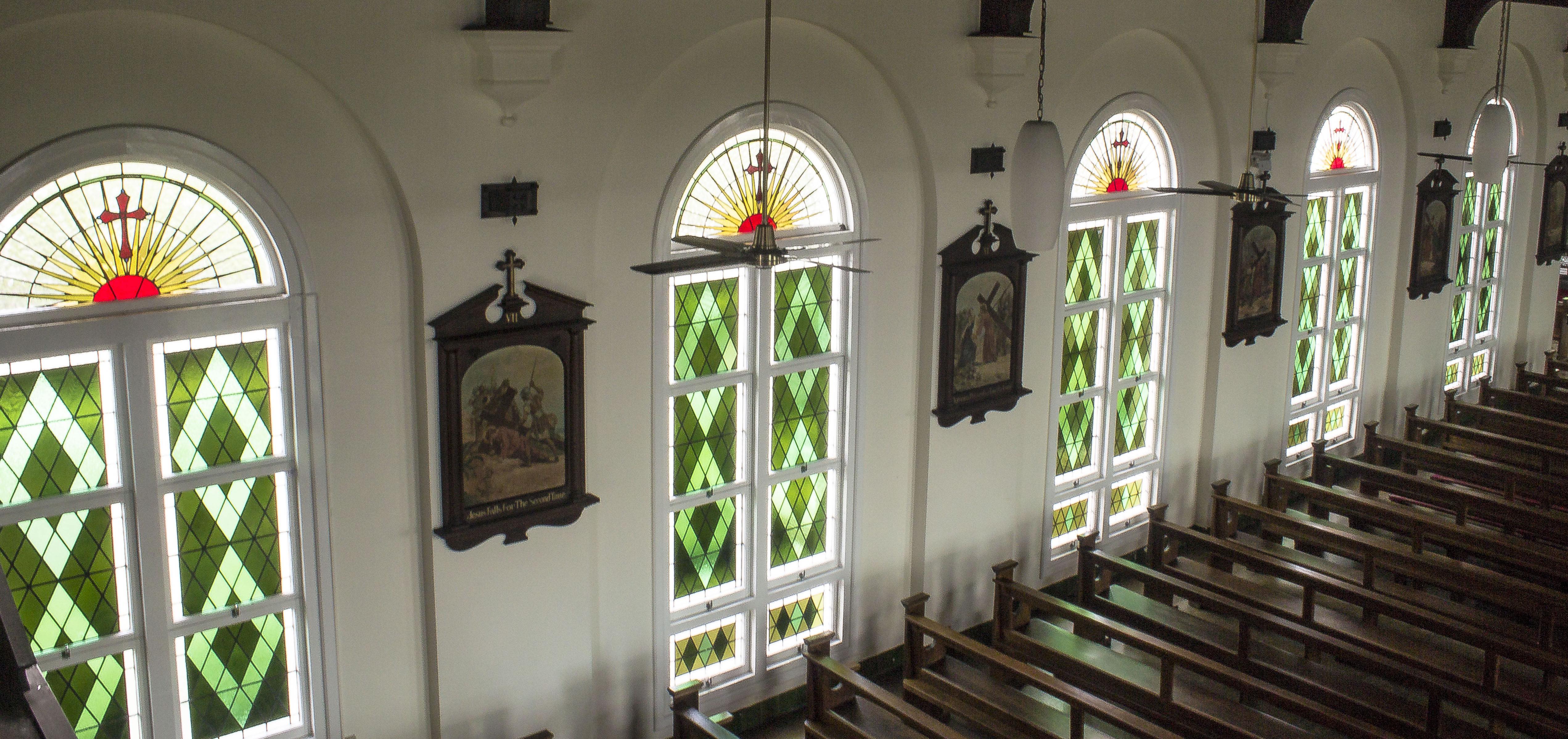As part of my 2017 trip to the US, I went to visit the Brooklyn Museum. Among other art pieces, the museum features a handful of stained glass panels and some Tiffany lamps (stored in the Visible Archives of the museum).

The first stained glass panel I examined was by John La Farge (1835-1910) and is titled Hospitalitas. The panel was created in the 1906-7 and was installed at the entrance hall stairwell of the house at 213 Clinton Av, Brooklyn, owned by Herbert L Pratt, head of Standard Oil. The window features the opalescent (or iridescent) glass typical of La Farge (and Tiffany too – but with most certainty it was La Farge that first used this material).


The second stained glass panel that was exposed is the Charles Merrill Memorial Window, realised by W Cole Brigham (1870-1944) in 1912. At his time, Brigham was recognised and acclaimed for his Marine Mosaics, which, like the window here (see below), include seashells and quartz river stones.



A Tiffany Studios panel could not miss from the museum – and here it is:

This window was created in 1905 at the Tiffany Studios in Corona, NY. The window portraits Dawn in the Woods in Springtime and Sunset in Autumn Woods.

The window was made in 1905 for the Universalist Church of Our Father in Classon and Ocean Av in Brooklyn. The windows were subsequently purchased by the All Souls Universalist Church in Ocean Av (Brooklyn) and installed there until it was acquired by the Brooklyn Museum.

The museum also exhibited a stained glass panel from the J. & R. Lamb Studios. This stained glass studio was established in 1857 and is still currently trading in New Jersey.

The panel, titled Religion Enthroned, was created in the 1900 for a commission by the Unites States government. The window was exhibited in the 1900 Exposition Universelle Internationale in Paris.

As the other windows above, also this stained glass used plating, a technique that consists in stacking together layers of glass to produce different tonalities: in Tiffany’s stained glasses this is often used to layer a semi-transparent piece on top of a painted piece to softned its edges. You would have seen some examples of windows that use this technique in this website.

The museum also exposed other Tiffany glass as lamps and vases in its Visible Storage department.

The image above shows one of the gracious Tiffany lamps with favrille glass. While, the one below shows one of the Tiffany copper foil lamps of the museum.


And here an esquisite example of one of the free standing lamps from Tiffany Studios:

Finally, the museum also had some glass from Frederick Carder (see my blog posts about my stay at Corning Museum of Glass, NY).





